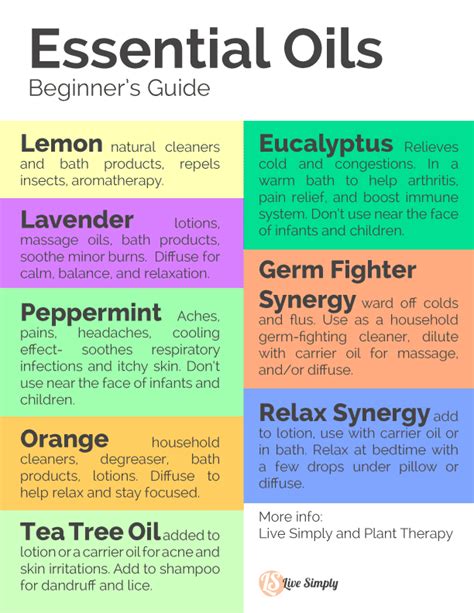Essential oils are highly concentrated plant extracts that have been used for centuries in aromatherapy, skincare, and other natural remedies. While essential oils offer a wide range of therapeutic benefits, they are too potent to be applied directly to the skin or ingested. That’s where base oils come in.

What Are Base Oils?
Base oils are carrier oils that are used to dilute essential oils and make them safe for topical use. They are typically plant-based oils that are high in fatty acids and have a light, non-greasy texture. Base oils help to disperse essential oils evenly over the skin, prevent irritation, and promote absorption.
Top 5 Base Oils for Essential Oils
-
Jojoba Oil: Jojoba oil is a plant-based wax ester that closely resembles human sebum, making it an ideal base oil for all skin types. It is non-comedogenic, meaning it won’t clog pores, and it is highly moisturizing.
-
Sweet Almond Oil: Sweet almond oil is a light, nutty-scented oil that is rich in vitamins A, B, and E. It is suitable for most skin types, including sensitive skin, and it is known for its nourishing and emollient properties.
-
Fractionated Coconut Oil: Fractionated coconut oil is a highly refined coconut oil that has been processed to remove its solid fats. It is a clear, odorless oil that is lightweight and spreads easily. It is an excellent base oil for massage and body care products.
-
Grapeseed Oil: Grapeseed oil is a light, non-greasy oil that is rich in antioxidants. It is a good choice for oily skin types, as it helps to balance sebum production and prevent breakouts.
-
Sunflower Oil: Sunflower oil is a light, unscented oil that is high in vitamin E. It is a versatile base oil that is suitable for all skin types, including dry and sensitive skin. It is also a good choice for massage, as it glides easily over the skin.
How to Use Base Oils with Essential Oils
To use base oils with essential oils, follow these steps:
- Choose a suitable base oil: Select a base oil that is appropriate for your skin type and the desired application.
- Dilute the essential oil: Essential oils should be diluted in a base oil to a concentration of 2-5%. For example, to create a 2% dilution, add 12 drops of essential oil to 30 ml of base oil.
- Mix the ingredients: Combine the essential oil and base oil in a small bowl or bottle and stir well.
- Apply to the skin: Apply the diluted oil to the desired area of skin and massage gently until absorbed.
Benefits of Using Base Oils
- Dilutes essential oils and makes them safe for topical use
- Prevents skin irritation
- Promotes absorption of essential oils
- Nourishes and moisturizes the skin
- Extends the shelf life of essential oils
Applications of Base Oils with Essential Oils
Base oils and essential oils can be used in a wide range of applications, including:
- Aromatherapy: Diffuse base oils with essential oils to create a relaxing or stimulating atmosphere.
- Skincare: Apply diluted essential oils to the skin for cleansing, moisturizing, and treating skin conditions.
- Massage: Use base oils with essential oils for massage to relax muscles, reduce stress, and improve circulation.
- Haircare: Add base oils and essential oils to shampoo or conditioner to nourish and strengthen hair.
- Household cleaning: Create natural cleaning products by combining base oils with essential oils that have antibacterial or antiviral properties.
Tips and Tricks
- Always dilute essential oils in a base oil before applying them to the skin.
- Avoid using base oils that are highly comedogenic, such as coconut oil and mineral oil, on acne-prone skin.
- Consider the scent of the base oil before adding essential oils. Some base oils, such as jojoba oil, have a light scent that will not interfere with the aroma of essential oils.
- Store essential oil blends in a dark glass bottle to preserve their potency.
Frequently Asked Questions
1. What is the best base oil for essential oils?
There is no one “best” base oil, as the ideal choice depends on your skin type and the desired application. Jojoba oil, sweet almond oil, and fractionated coconut oil are all good options for most people.
2. How much essential oil should I dilute in a base oil?
The recommended dilution rate for essential oils is 2-5%. For example, to create a 2% dilution, add 12 drops of essential oil to 30 ml of base oil.
3. Can I use essential oils without a base oil?
No, essential oils should never be applied directly to the skin or ingested. They must always be diluted in a base oil before use.
4. Are base oils safe to use during pregnancy?
Some base oils, such as jojoba oil and sweet almond oil, are generally considered safe to use during pregnancy. However, it is always best to consult with a healthcare professional before using essential oils or base oils during pregnancy.
5. Can I use base oils to dilute essential oils for children?
Yes, base oils can be used to dilute essential oils for children. However, it is important to use a lower dilution rate, such as 1-2%, and to avoid using essential oils that are known to be toxic or irritating to children.
6. How long do essential oil blends last?
The shelf life of essential oil blends depends on the base oil used and the storage conditions. In general, blends made with carrier oils that have a long shelf life, such as jojoba oil and fractionated coconut oil, will last longer than blends made with carrier oils that have a shorter shelf life, such as sweet almond oil and grapeseed oil. Stored in a cool, dark place, most blends will last for at least 6 months.
